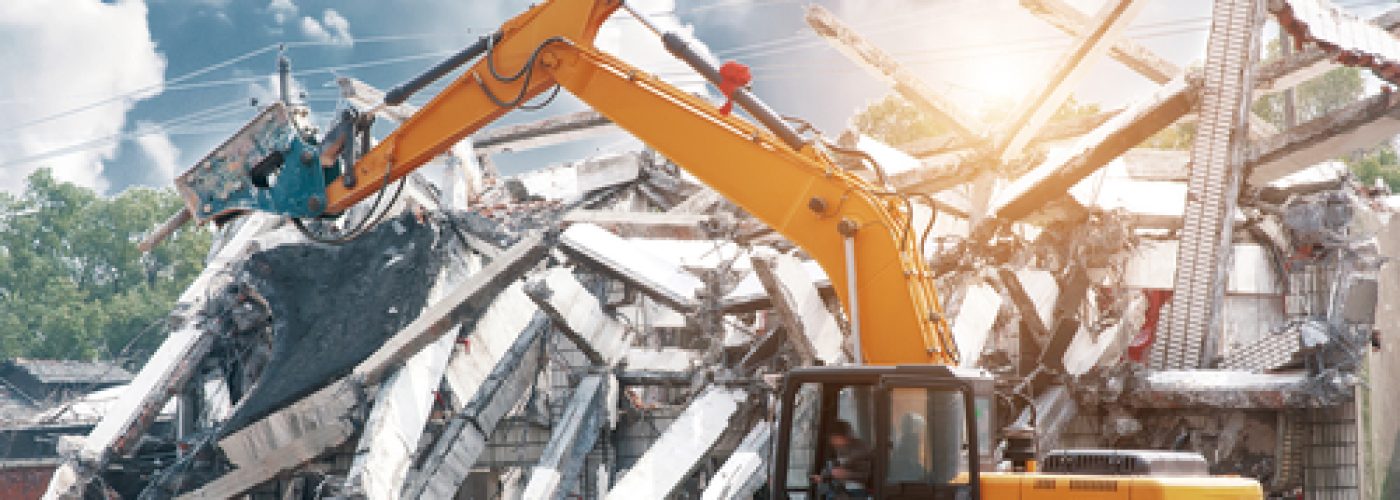Industrial demolition can be as straightforward as swinging a wrecking ball to knock down a structure or as intricate as disintegrating a building using jackhammers and pry bars.
Every industrial environment is unique, and so are the objectives behind the demolition. If you are looking to demolish your industrial building, it is important to do it the right way to avoid any safety hazards or obstructions to the redevelopment project.
Here’s a 6-step approach that you can follow to get the job done to your satisfaction and objectives.
#1 Creating a Decommissioning Plan
As an owner or site manager, you need to consider various aspects of your demolition project and communicate your requirements clearly to the service provider. This is crucial to creating your project’s decommissioning plan, which defines the scope of work, risk assessments and waste management. All these factors put together will be subject to approval by authorities before the demolition begins.
It is important to have all the drawing plans and site specifications ready before the demolition team arrives. Allow them a couple of hours or days to pour through the documents and provide a time and price estimate.
#2 Make Your Key People Part of the Process
People who have been running your industrial site for years should be actively involved in the demolition process. In some cases, demolition can take months or even years to complete. Having your key people to oversee and advise throughout the process will help the demolition team decommission your industrial site efficiently.
Making your demolition service provider fully aware of your site’s nuances, past accidents, and critical zones will allow them to decommission your site to the best quality and safety standards.
#3 Cleaning and Decontamination
Accidents can happen in any industrial environment. Suppose one of your employees spilled a barrel of chemicals 5 years ago. Your demolition team must know about this accident so they can decontaminate and clean accordingly, paving the way for environmentally-friendly redevelopment projects.
Not just floors, but the equipment, ducts and machinery should also be thoroughly cleaned before the demolition work begins.
#4 Removal/Disposal of Assets
Once the demolition team is through with the planning and decontamination, they will begin to mobilize the crew to your site. All your equipment and machinery will be transported to a storage or recycling facility as instructed by you.
Things can get misplaced or broken when it comes to a process as massive as industrial demolition. That said, equipment handling and transportation is an important step where the involvement of your key personnel is essential.
#5 Strip-Out and Waste Management
The demolition method can vary depending on your requirements and objectives. Whether it’s total demolition for a vacant site or selective demolition for a mothballed facility, it is important to discuss your options with your service provider before proceeding.
Once the demolition is complete, and all that is left to handle is asbestos and universal waste, the next step is waste management. However, demolition and waste management can go hand in hand in some cases.
Waste management may include flushing tanks and pipes that carry harmful chemicals or ammonia. The process will also include the disposal of universal waste in an off-site landfill.
#6 Closeout and Site Handover
Your demolition service provider will maintain a record of every activity as your demolition progresses through stages. Once the demolition is complete, assets are secured, and the waste is carried off to a designated landfill, the site will be handed over to the next concerned entity for redevelopment.
Final Words
From preparing industrial or commercial demolition for Total Wrecking to asset management, waste disposal and recycling, your participation can be invaluable to the process. Therefore, it is important to hire a demolition team that can work closely with you and stick to the guidelines to keep legal troubles off the fence.





